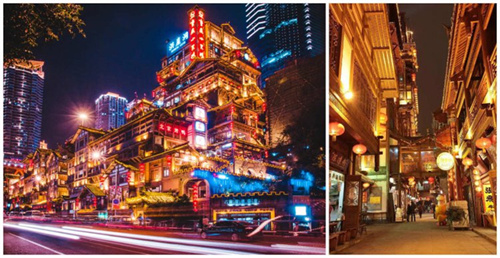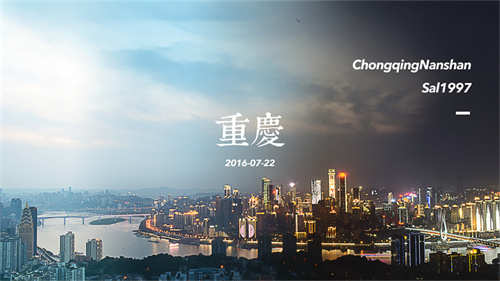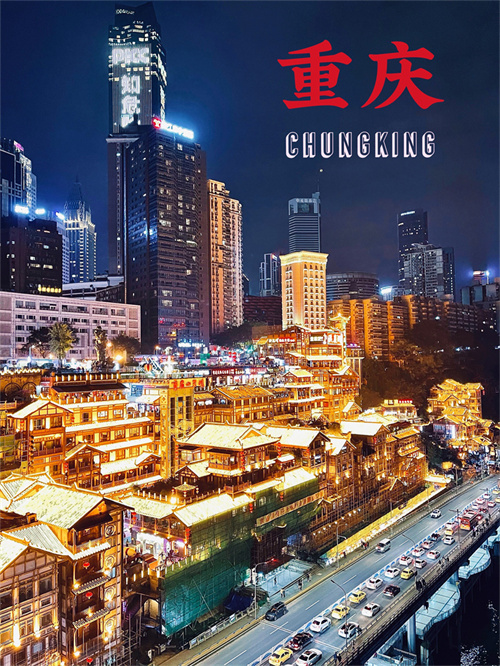Territory
China is located at the east coast of the largest continent (Eurasia) as well as the western margin of the largest ocean (Pacific). It has a land area of about 9.6 million square km, occupying 6.5 percent of the total land area of the world. From the confluence of the Heilong River and its tributary, the Wusuli River, westward to the Pamir Plateau, the distance is more than 5200 km. From midstream of the Heilong River north of Mohe, southward to Zengmu Shoal of the Nansha Islands near the equator, the distance is more than 5500 km. Its population of more than 1.3 billion accounts for approximately one-fifth of the world population...
MOREChongqing
Attention:541 From:China Daily
Brief introduction
Lying in southwestern China on the upper reaches of the Changjiang (Yangtze) River, Chongqing Municipality is the largest industrial and commercial center in the southwest and a land and water communications hub on the upper reaches of the Changjiang River. It has 40 districts, cities, and counties under its jurisdiction, a population of 30.2 million, and an area of 82,000 square kilometers. Besides the Han who form the majority of its total population of 30.9 million, numerous ethnic groups reside in Chongqing, including Yi, Tibetan, Miao, Qiang, You and Tujia. The average salary of Chongqing citizen is 1796 yuan.
Topography and Climate
The urban area of Chongqing is located on the tip of an offshoot of the Huaying Mountains, slanting from west to east. Chongqing is surrounded by mountains on all sides and by the Changjiang and Jialing rivers on three sides. It is called the "mountain city." The city has a humid, cloudy climate with a long rainy season but scarce snow and frost. Mist lingers on in spring and autumn; hence it is also called "misty Chongqing." The annual mean temperature is 18.6°C.
History
Since its founding 3,000 years ago, Chongqing has been called Jiangzhou, Yuzhou, and Gongzhou. Since the Qin Dynasty (221 BC-206 BC), many dynasties have set up administrative institutions that have endowed the city with brilliant cultures. It opened wider to the outside world in 1891, and was designated as “temporary capital” by the Kuomintang Government during the War of Resistance against Japan (1937-1945). It became one of the central municipalities after the founding of the New China. In 1997, Chongqing was made the fourth municipality directly under the central government.

Transportation
Chongqing features convenient water, land, and air transport facilities. There are more than 50 airlines leading to Nagoya, Singapore, Bangkok, Hong Kong, Beijing, Shanghai, Lhasa, and other places. It is the meeting place of the Chengyu (Chengdu-Chongqing), the Xiangyu Xianfan-Chongqing and Yuhuai (Chongqing-Huaihua) railroads. Chongqing is the best point to start a boat excursion and tour the world-famous Three Gorges on the Changjiang River.

Tourism
Chongqing attracts visitors from home and abroad for its cultural heritage and other tourist attractions. The city is the starting point for the Yangtze River Cruise, which explores the stunning scenery of the Three Gorges. Other attractions include the Dazu Rock Carvings , valuable works of art carved during the Ninth Century, Gold Buddhist Mountain, a rich repository of diverse animals and plants; and Fishing Town, one of three ancient battlefields in China. Ancient Ci Qi Kou village lures tourists to linger in its streets to buy handicraft souvenirs.



















